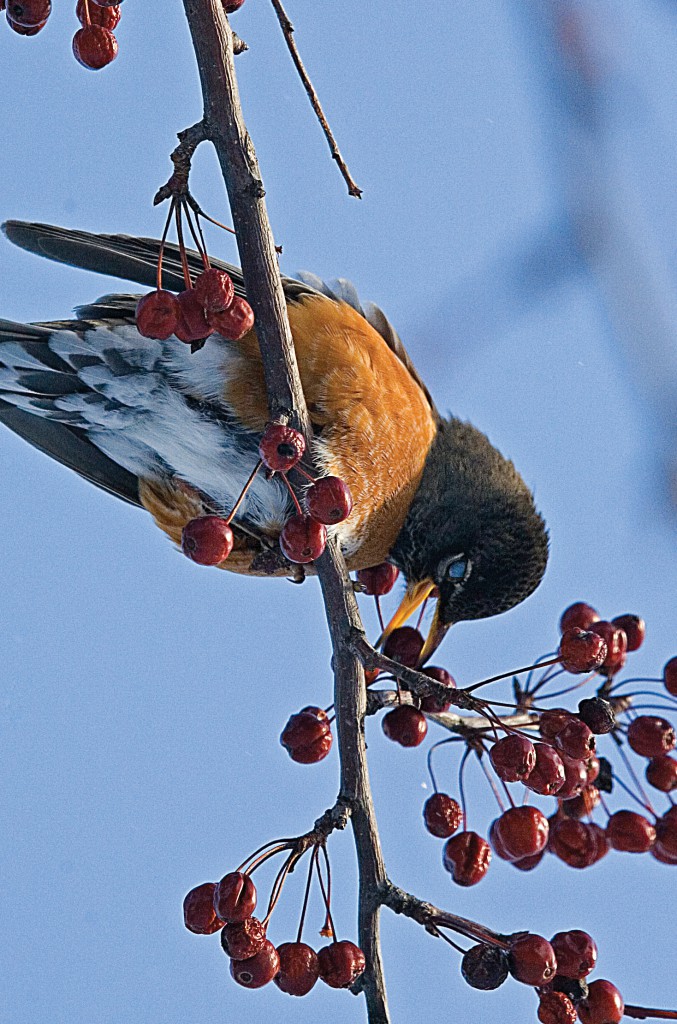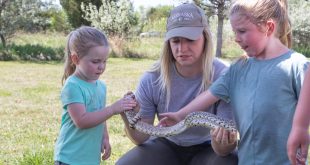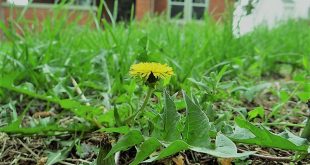Since fish have fluid constantly cleaning debris from their eyes, their use of eyelids for this purpose is not needed. However, as animals have moved through evolutionary history from water to land, the eye has slowly evolved to include the eyelid and tear ducts, whose purposes were to help keep the eye clear and clean. Yet for an animal such as a bird that is often in constant motion, creating the potential for additional dryness and debris to interrupt the eye and cause temporary, if not more prolonged, blindness, another tool became necessary to aid in these visual dilemmas – the nictitating membrane.
A bird’s eye is protected by three eyelids: The upper, which resembles that of humans; a lower lid that closes when the bird sleeps; and the nictitating (which means “blinking”) membrane, which uses cartilage to sweep horizontally across the eye’s cornea from the medial side.
The nictitating membrane, also known as the haw, is a thin, translucent third eyelid that is hinged at the inner side of the eye. It serves multiple functions, including keeping the eye clean and moist while also protecting it from wind, bright light and possible obstructions that could enter the eye.

Birds also use this membrane while swimming, flying or eating so that they can prevent any harm from being done to this essential sense without compromising their ability to use it. Predators such as the owl, for instance, cannot risk repeatedly blinking their eyes while on the hunt for small prey, yet also cannot risk harming their eyes while darting through woody, or even open, terrain.
The nictitating membrane functions as goggles for these birds, while the additional moisture created by the membrane also aids their vision.
However birds such as the owl or the American robin are not the only animals that have nictitating membranes – reptiles and some mammals also have this protective covering. Aardvarks close their membrane when eating termites to keep from getting bitten; polar bears use their haw like sunglasses to filter ultraviolet light and prevent snow blindness, while also working as waterproof goggles in the salty, cold water; sharks use this protective covering when biting to prevent injury against thrashing prey.
In some other animals, the nictitating membrane only appears if the animal is ill. A visible haw could be a symptom of dehydration, tetanus, enophthalmos, low body weight, microphthalmia, or an abscess near the eye in some animals including domestic cats and dogs.
The human eye also has the vestigial remains of a nictitating membrane known as the plica semilunaris. It’s the crescent-shaped piece of skin folded permanently behind the fleshy “button” in the corner of the eye closest to the nose.
This membrane is just one more way an animal’s body is adapted to the specific environment where it resides. Just like many birds’ eyes are set more laterally on their head to prevent predator attacks from behind, the nictitating membrane serves a valuable purpose for animals whose job it is to fly at high speeds in its hunting and evading efforts.
And while birds such as the American robin are not listed in the same hunting league as red-tailed hawks or peregrine falcons, it should still be noted that American robins can reach flying speeds of over 30 miles per hour. This is necessary considering some of their diet consists of insects, small birds and snakes.
Keep in mind, however, that while in certain situations a robin is the predator, it is also the prey for others, including a number of raptors, whose own nictitating membranes will be in use while chasing robins through the woodlots of Nebraska.
 Nebraskaland Magazine
Nebraskaland Magazine



